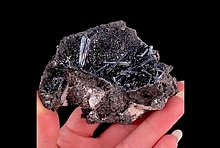Home PageAbout MindatThe Mindat ManualHistory of MindatCopyright StatusWho We AreContact UsAdvertise on Mindat
Donate to MindatCorporate SponsorshipSponsor a PageSponsored PagesMindat AdvertisersAdvertise on Mindat
Learning CenterWhat is a mineral?The most common minerals on earthInformation for EducatorsMindat ArticlesThe ElementsThe Rock H. Currier Digital LibraryGeologic Time
Minerals by PropertiesMinerals by ChemistryAdvanced Locality SearchRandom MineralRandom LocalitySearch by minIDLocalities Near MeSearch ArticlesSearch GlossaryMore Search Options
The Mindat ManualAdd a New PhotoRate PhotosLocality Edit ReportCoordinate Completion ReportAdd Glossary Item
Mining CompaniesStatisticsUsersMineral MuseumsClubs & OrganizationsMineral Shows & EventsThe Mindat DirectoryDevice SettingsThe Mineral Quiz
Photo SearchPhoto GalleriesSearch by ColorNew Photos TodayNew Photos YesterdayMembers' Photo GalleriesPast Photo of the Day GalleryPhotography
╳Discussions
💬 Home🔎 Search📅 LatestGroups
EducationOpen discussion area.Fakes & FraudsOpen discussion area.Field CollectingOpen discussion area.FossilsOpen discussion area.Gems and GemologyOpen discussion area.GeneralOpen discussion area.How to ContributeOpen discussion area.Identity HelpOpen discussion area.Improving Mindat.orgOpen discussion area.LocalitiesOpen discussion area.Lost and Stolen SpecimensOpen discussion area.MarketplaceOpen discussion area.MeteoritesOpen discussion area.Mindat ProductsOpen discussion area.Mineral ExchangesOpen discussion area.Mineral PhotographyOpen discussion area.Mineral ShowsOpen discussion area.Mineralogical ClassificationOpen discussion area.Mineralogy CourseOpen discussion area.MineralsOpen discussion area.Minerals and MuseumsOpen discussion area.PhotosOpen discussion area.Techniques for CollectorsOpen discussion area.The Rock H. Currier Digital LibraryOpen discussion area.UV MineralsOpen discussion area.Recent Images in Discussions
Improving Mindat.orgRUTILE type locality

22nd Nov 2005 13:26 UTCJakub Jirásek
Jakub Jirásek

22nd Nov 2005 15:12 UTCMarco E. Ciriotti
In my knowledge the T/L is Cajuelo, Burgos, Spain (Werner, 1803).

22nd Nov 2005 15:39 UTCPeter Haas
A prominent example is wulfenite: it was discovered in a deposit near Annaberg in Lower Austria, but the material used to carry out the analyses came from Bleiberg, Carinthia. Therefore, the latter is the correct TL. The former is simply the locality of its first description.

22nd Nov 2005 16:33 UTCalfredo
One concrete example: Magnesioriebeckite was first described (chemistry and structure) using material from Alto Chapare, Bolivia, published by Whittaker in Acta Crystallographica in 1949. Although Whittaker invented no new name for this material, and the word "magnesioriebeckite" does not appear in the article, I would consider this to be the type locality. The name, as we now know it, was first used for japanese material about 7 years later, so those writers who base their type localities on literature searches to find the first use of a name, list Japan as the type locality.
Cheers,
Alfredo

23rd Nov 2005 17:16 UTCjohan
For rutile both Dana and Hintze list Romé de l'Isle 1783 as first author, who calls the mineral "Schorl rouge" from madagascar and Spain. The first von Born reference they mention is from 1790 (Rhoniz in Hungary). They may of course have missed out on your reference Jakub - but you need to substantiate it I think. Evidently von Born did not call it "rutile", and in what work of his have you found the reference?
cheers
johan

23rd Nov 2005 17:18 UTCjohan
Index fossilium / / Ignaz von Born. - Praga : Gerle, 1772
johan

2nd Dec 2005 18:00 UTCLaszlo Horvath
For anyone interested in the history of the description of rutile, I recommend the newly published work: "History of minerals, rocks and fossil resins discovered in the Carpathian Region." by Gabor Papp. published by the Hungarian Natural History Museum, Budapest.
Type localities of minerals "described" in the 18th Century are problematic, especially when the names used were like "basaltes ruber" <= red schorl> (Born 1772), as was the case with rutile. Velká Revúca is the most likely TL.
Laszlo




Mindat.org is an outreach project of the Hudson Institute of Mineralogy, a 501(c)(3) not-for-profit organization.
Copyright © mindat.org and the Hudson Institute of Mineralogy 1993-2024, except where stated. Most political location boundaries are © OpenStreetMap contributors. Mindat.org relies on the contributions of thousands of members and supporters. Founded in 2000 by Jolyon Ralph.
Privacy Policy - Terms & Conditions - Contact Us / DMCA issues - Report a bug/vulnerability Current server date and time: May 11, 2024 07:08:03
Copyright © mindat.org and the Hudson Institute of Mineralogy 1993-2024, except where stated. Most political location boundaries are © OpenStreetMap contributors. Mindat.org relies on the contributions of thousands of members and supporters. Founded in 2000 by Jolyon Ralph.
Privacy Policy - Terms & Conditions - Contact Us / DMCA issues - Report a bug/vulnerability Current server date and time: May 11, 2024 07:08:03











